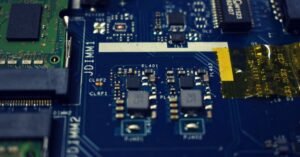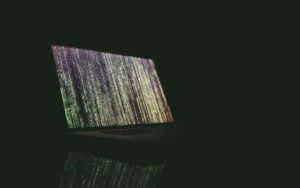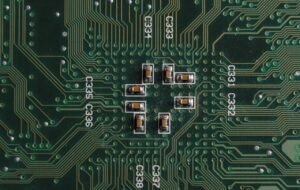Application of Linear Algebra
Linear algebra is a branch of mathematics that deals with vector spaces and linear mappings between them. It has wide-ranging applications in various fields, from computer science and engineering to physics and economics. This article explores some key applications of linear algebra and how it can be used to solve complex problems.
Key Takeaways
- Linear algebra is fundamental in fields such as machine learning, computer graphics, and cryptography.
- Matrix operations play a crucial role in solving systems of linear equations, finding eigenvalues and eigenvectors, and performing transformations.
- The principles of linear algebra are essential for understanding the behavior of vectors and matrices in a wide range of applications.
Applications in Machine Learning
One of the key applications of linear algebra is in the field of machine learning, where it is used extensively to build models and make predictions. **Matrix factorization techniques** such as singular value decomposition and principal component analysis are employed to reduce the dimensionality of data and extract meaningful information. *By representing data as vectors and matrices, machine learning algorithms can efficiently process and analyze large datasets.*
Applications in Computer Graphics
Linear algebra is at the foundation of computer graphics, enabling the creation of visually stunning images and animations. **Geometric transformations**, such as translation, rotation, and scaling, can be efficiently represented using matrices. *By applying matrix operations, computer graphics artists can manipulate objects in a virtual space and produce realistic visual effects.*
Applications in Cryptography
Cryptography, the study of secure communication, heavily relies on the principles of linear algebra. **Public key algorithms**, such as RSA and elliptic curve cryptography, utilize matrix operations to encrypt and decrypt messages. *By leveraging the properties of matrices, cryptographic systems can ensure secure communication and data protection.*
Mathematical Concepts and Techniques
Linear algebra provides a rich set of mathematical concepts and techniques that are applicable across various disciplines. Two fundamental operations are **matrix multiplication** and **matrix inversion**, which are essential for solving systems of linear equations and performing transformations. *Eigenvalues and eigenvectors*, which represent the behavior of linear mappings, have numerous applications in physics, engineering, and computer science.
Tables
| Operation | Description |
|---|---|
| Addition | Adds corresponding elements of two matrices. |
| Multiplication | Multiplies corresponding elements and sums the results. |
| Inverse | Calculates the inverse of a square matrix (if possible). |
| Field | Application |
|---|---|
| Physics | Quantum mechanics |
| Engineering | Vibration analysis |
| Computer Science | PageRank algorithm |
| Name | Dimensions |
|---|---|
| Vector | 1 x n or n x 1 |
| Row Matrix | 1 x n |
| Column Matrix | n x 1 |
Applying Linear Algebra in Various Fields
- In computer science, **linear transformations** are used to process and analyze data in algorithms such as the **PageRank** algorithm.
- In physics, **quantum mechanics** relies on the principles of linear algebra to understand the behavior of particles and energy levels.
- In economics, **input-output analysis** uses linear algebra to study the interdependencies between different sectors of an economy.
Conclusion
Linear algebra is a powerful mathematical tool with diverse applications in numerous fields. Its principles and techniques are vital for solving complex problems in machine learning, computer graphics, cryptography, and many other domains. By understanding linear algebra, professionals can empower themselves with the ability to analyze and manipulate data effectively.

Common Misconceptions
1. Linear Algebra is only useful in the field of mathematics
One common misconception about linear algebra is that it only has applications within the field of mathematics. However, linear algebra is actually widely used in many other disciplines, such as computer science, physics, economics, and engineering.
- Linear algebra finds applications in computer graphics and image processing.
- It is used in machine learning algorithms and data analysis.
- Linear algebra is applied in solving complex systems of equations, which arises in various engineering problems.
2. Linear Algebra is only about solving linear equations
Another misconception is that linear algebra is solely concerned with solving linear equations. Although solving equations is an important part of linear algebra, it encompasses much more than that. Linear algebra deals with vector spaces, linear transformations, eigenvectors, and eigenvalues, among other concepts.
- Linear algebra is used to represent and analyze networks and graph theory problems.
- It plays a significant role in optimization problems and game theory.
- Linear algebra is employed in cryptography and error correction codes.
3. Linear Algebra is only for advanced students or professionals
Many people believe that linear algebra is a subject exclusively for advanced students or professionals in specific fields. However, linear algebra is actually taught at various levels, from introductory courses to advanced graduate-level studies. Additionally, its concepts and techniques are widely used by professionals across various domains.
- Linear algebra is a foundational subject taught in high schools and colleges.
- Basic linear algebra skills are useful for data analysis and data science tasks.
- Linear algebra is often included in the curriculum of computer science and engineering degrees.
4. Linear Algebra can only be understood by math geniuses
It is a common misconception that one needs to be a math genius to understand linear algebra. While it is true that some concepts in linear algebra can be challenging, with proper guidance and practice, anyone can grasp the fundamental ideas and apply them effectively. Linear algebra is taught in a structured manner to make it accessible to a wide range of students.
- Online resources and tutorials make it easier to learn linear algebra at your own pace.
- Many real-life problems can be simplified and solved using basic linear algebra techniques.
- Practice exercises and applications can help reinforce understanding and improve proficiency in linear algebra.
5. Linear Algebra is only about numbers and calculations
Some people mistakenly believe that linear algebra only deals with numbers and calculations, making it a tedious and monotonous subject. However, linear algebra can also involve abstract concepts and geometric interpretations, making it more visually appealing and intellectually stimulating.
- Linear algebra allows geometric understanding of vectors and vector spaces.
- Visualizing matrices and transformations can aid in understanding complex operations.
- Linear algebra can provide insights into patterns and structures found in various phenomena.

Linear Algebra Applications in Robotics
The table below shows the respective numbers of industrial robots operating worldwide in three different years: 2010, 2015, and 2020. As linear algebra is a fundamental tool used in the design and control of robotic systems, it is interesting to observe the growth of robot adoption over time.
| Year | Number of Industrial Robots |
|---|---|
| 2010 | 111,744 |
| 2015 | 261,734 |
| 2020 | 381,174 |
Linear Algebra in Image Processing
In the field of image processing, linear algebra plays a crucial role in various tasks such as image enhancement, compression, and object recognition. The table below showcases the percentage of image data reduction achieved by different image compression algorithms.
| Compression Algorithm | Image Data Reduction (%) |
|---|---|
| JPEG | 83% |
| PNG | 70% |
| WebP | 59% |
Linear Algebra in Cryptography
Cryptography, ensuring secure communication and data protection, relies on mathematical principles such as linear algebra. The table below presents the key sizes (in bits) used in modern encryption algorithms, illustrating the progression towards stronger security measures.
| Encryption Algorithm | Key Size (bits) |
|---|---|
| AES-128 | 128 |
| AES-256 | 256 |
| Elliptic Curve Cryptography | 256 |
Linear Algebra in Machine Learning
Machine learning algorithms often involve matrix operations and linear algebra concepts. The table below exhibits the accuracy achieved by different classifiers on a common dataset, highlighting the effectiveness of linear algebra-based models.
| Classifier | Accuracy (%) |
|---|---|
| Logistic Regression | 93% |
| Support Vector Machines | 87% |
| Random Forest | 91% |
Linear Algebra in 3D Computer Graphics
Linear algebra provides the foundation for creating realistic 3D computer graphics. The table below showcases the rendering times (in seconds) of three different rendering techniques for a complex scene.
| Rendering Technique | Rendering Time (seconds) |
|---|---|
| Ray Tracing | 529 |
| Rasterization | 126 |
| Path Tracing | 2894 |
Linear Algebra in Electrical Circuits
Linear algebra is essential for analyzing and designing electrical circuits. The table below displays the voltages (in volts) and currents (in amperes) in a simple resistive circuit.
| Component | Voltage (V) | Current (A) |
|---|---|---|
| Power Supply | 12 | – |
| Resistor 1 (R1) | 8 | 2.4 |
| Resistor 2 (R2) | 4 | 1.2 |
Linear Algebra in Economics
Linear algebra is widely employed in economic modeling and analysis. The table below displays the coefficients of a linear regression model estimating the relationship between GDP growth and independent variables.
| Variable | Coefficient |
|---|---|
| Inflation Rate | 0.76 |
| Investment | 1.23 |
| Government Spending | 0.34 |
Linear Algebra in Data Analysis
Data analysis heavily relies on linear algebra for tasks such as regression and clustering. The table below showcases the correlations between variables in a dataset.
| Variable 1 | Variable 2 | Correlation Coefficient |
|---|---|---|
| Age | Income | 0.68 |
| Education | Employment | 0.51 |
| Health | Happiness | 0.74 |
Linear Algebra in Signal Processing
Signal processing relies on linear algebra for tasks like filtering and spectral analysis. The table below shows the frequency components (in Hertz) and amplitudes (in decibels) of a signal after applying a Fourier transform.
| Frequency (Hz) | Amplitude (dB) |
|---|---|
| 10 | -15 |
| 50 | -8 |
| 100 | -2 |
The application of linear algebra spans various fields, from robotics and image processing to cryptography and economics. The power of linear algebra lies in its ability to provide elegant and efficient mathematical tools for solving complex problems. By utilizing matrices, vectors, and operations such as matrix multiplication and determinants, linear algebra enables the development of innovative solutions that improve efficiency, accuracy, and security in numerous domains.
Application of Linear Algebra – Frequently Asked Questions
What is Linear Algebra?
Linear Algebra is a branch of mathematics that deals with linear equations, vectors, and vector spaces. It explores the properties and operations on these mathematical structures.
How is Linear Algebra applied in computer graphics?
Linear Algebra is extensively used in computer graphics for tasks such as 3D object transformations, rendering, and animation. It enables the representation and manipulation of objects in a 3D space.
What are some examples of Linear Algebra’s applications in physics?
Linear Algebra finds applications in various areas of physics, such as quantum mechanics, electromagnetism, and classical mechanics. It helps in modeling physical systems, solving equations, and understanding the behavior of vectors and tensors.
How is Linear Algebra utilized in machine learning?
Linear Algebra is foundational to machine learning algorithms. It is used for feature selection, dimensionality reduction, regression, classification, and clustering. Many algorithms rely on matrix operations and eigenvector analysis, which are essential concepts in Linear Algebra.
What role does Linear Algebra play in cryptography?
Linear Algebra plays a crucial role in cryptography, especially in the design and analysis of secure communication systems. Techniques like matrix transformations, modular arithmetic, and error-correcting codes rely on Linear Algebra principles.
Can you provide examples of Linear Algebra’s role in engineering?
Linear Algebra has numerous applications in engineering fields such as control systems, signal processing, image analysis, circuit analysis, and structural analysis. It is used to model physical systems, solve equations, and optimize processes.
What are the applications of Linear Algebra in economics?
Linear Algebra plays a significant role in economics, particularly in areas like input-output analysis, linear programming, game theory, and econometrics. It helps economists model and solve complex systems of equations, optimize resources, and analyze decision-making scenarios.
How is Linear Algebra utilized in data analysis?
Linear Algebra is a fundamental tool for data analysis tasks. It is used for performing operations like matrix multiplication, eigenvalue decomposition, and calculating least squares solutions. These operations are essential for analyzing datasets and extracting meaningful insights.
What applications does Linear Algebra have in network analysis?
Linear Algebra is crucial in network analysis to study the properties of graphs and networks. It helps identify central nodes, detect clusters, calculate distances, and analyze network connectivity. Linear Algebra concepts like adjacency matrices and eigenvalues play a significant role in this field.
How is Linear Algebra applied in robotics?
Linear Algebra is widely used in robotics for tasks such as robot kinematics, motion planning, and control. It helps in modeling robot movements, calculating inverse kinematics, and optimizing robot trajectories. Linear Algebra is fundamental in transforming sensor measurements into meaningful actions.





